A BRIEF HISTORY OF THE PARISH CHURCH OF St. JOHN the BAPTIST, OLD MALDEN
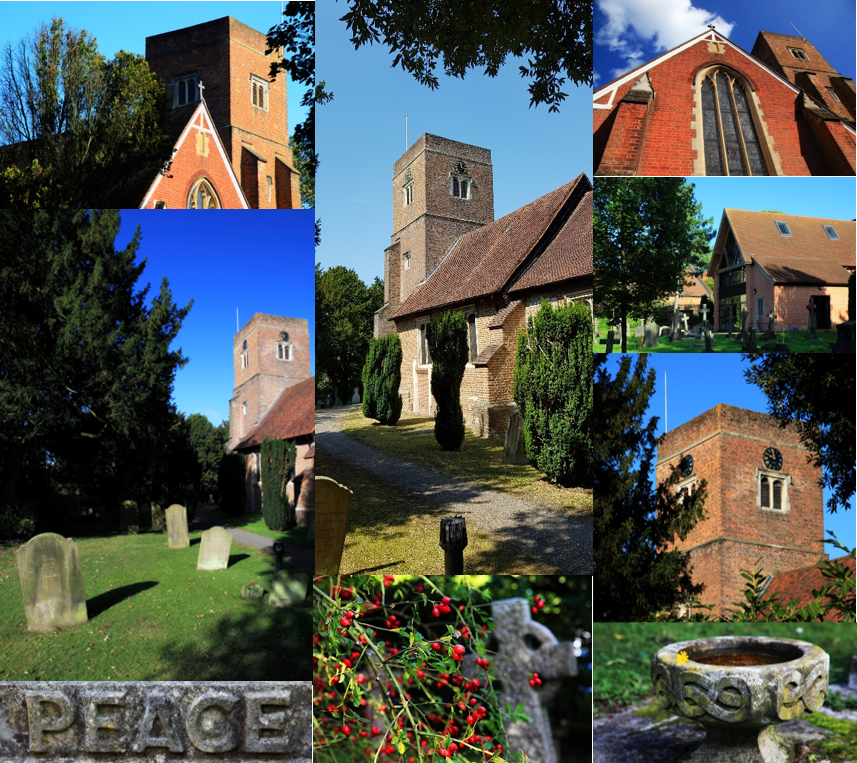
Early Iron Age: Over the years archaeological excavations uncovered evidence that the hill at Malden had been in continuous domestic occupation since the Early Iron Age.
1086: First mention of the Saxon church at Maeldune (The Cross on the Hill) was recorded in the Domesday Book. There are still remains of the Saxon church.
The lower part of the old flint and stone chancel wall was retained during the rebuilding in 1611. There is a blocked-up doorway which has a typical Saxon triangular head.
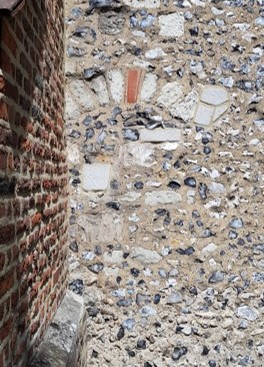
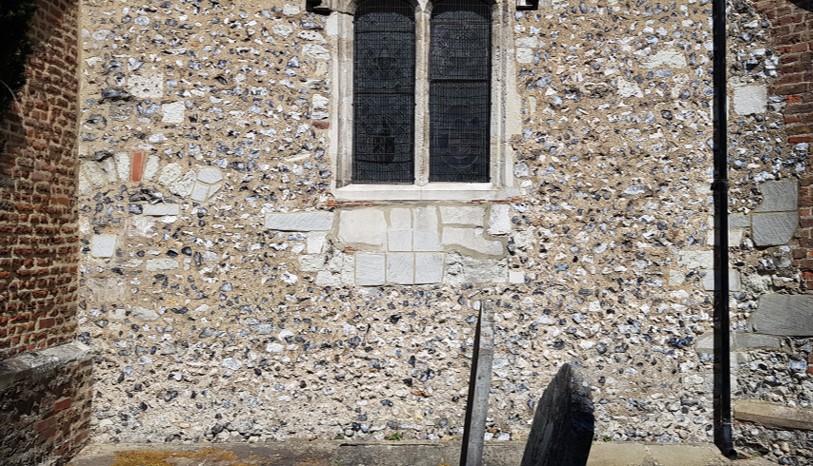
1240: Walter de Merton became the Lord of the Manor (he later became Chancellor of England and Bishop of Rochester). He founded the earliest college at Oxford – Merton College – which was supported by revenue from his estates, including Malden. His administrative headquarters would have been at the Manor House. His coat of arms is in the heraldic window of the Lady Chapel. To this day Merton College has the right to appoint the vicar of this parish.
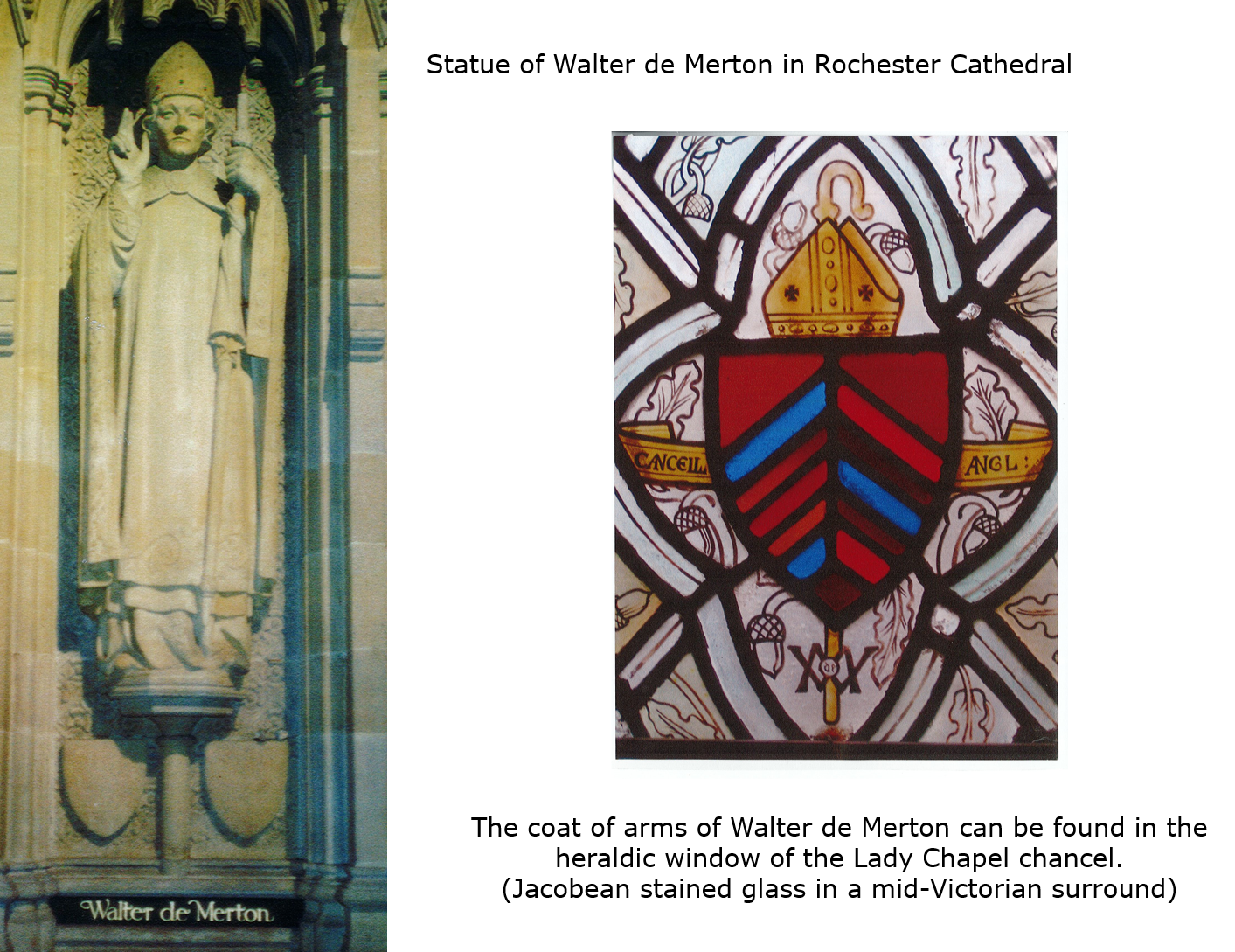
1264: Civil War – Simon de Montford’s forces occupied Malden for 5 months.
1348: The Black Death attacked England and it is probably significant that a new vicar had to be appointed in 1349 and 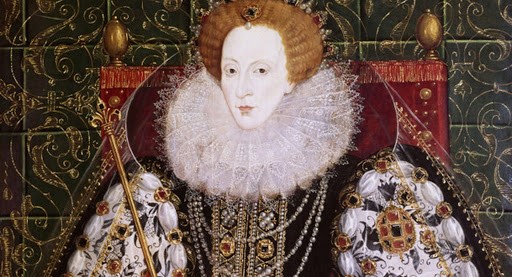 another in 1350.
another in 1350.
1585: The church was in a state of decay. In 1596 the villagers of Malden petitioned Queen Elizabeth I asking for her help – but nothing was done. By the end of the century the church was almost in ruins.
1609: The church was beyond repair but once again an appeal was launched, this time with success. Rebuilding was put in hand and completed in 1611.
1611: Thomas Ravis, Bishop of London, who grew on in Malden, and John Goode, Lord of the Manor, were both involved in the rebuilding. The nave and tower were entirely rebuilt in red brick while the lower part of the old flint and stone chancel walls were patched up and retained. A new roof was also built.
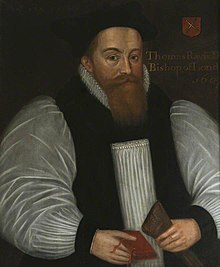
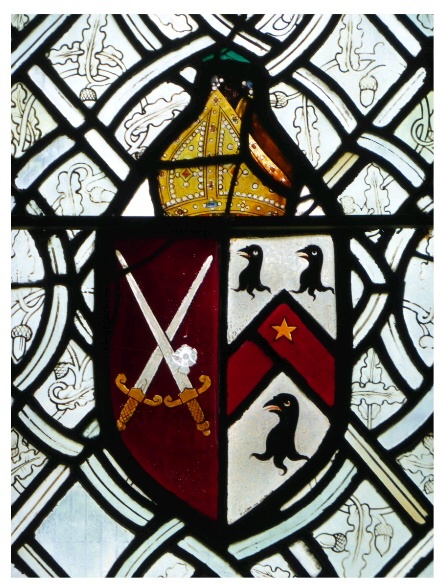
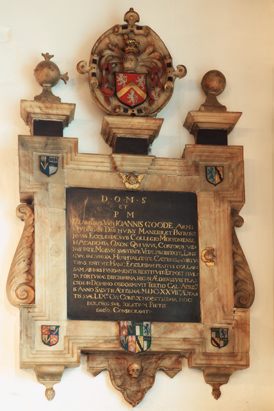
Thomas Ravis, Bishop of London Heraldic window - Ravis coat of arms Memorial to John Goode
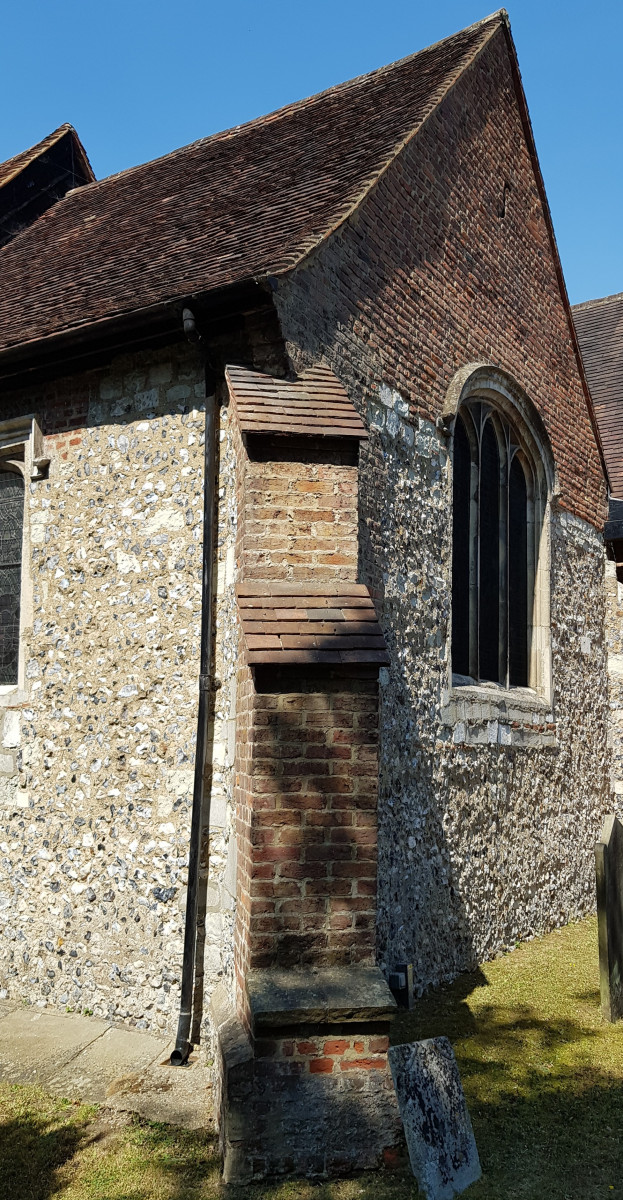
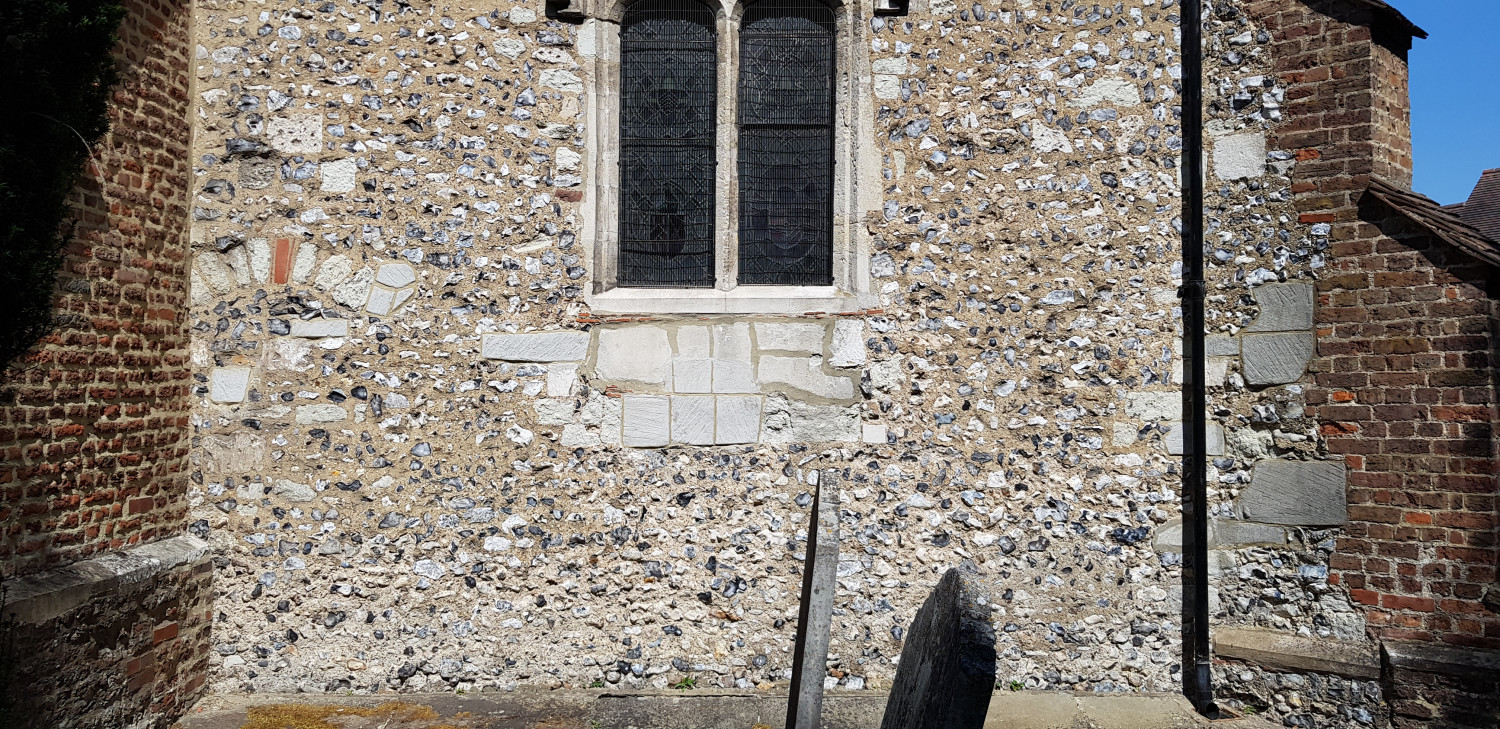
1742: The windows of the church were shattered when the gunpowder mill on the Hogsmill river blew up. The explosion was heard as far away as London.
1827: Since the rebuilding of 1611, not much had been done to the fabric of the church. It had almost disappeared inside a shroud of ivy. In fact, a boy was regularly sent up to collect chickens' eggs from the nests in the ivy.
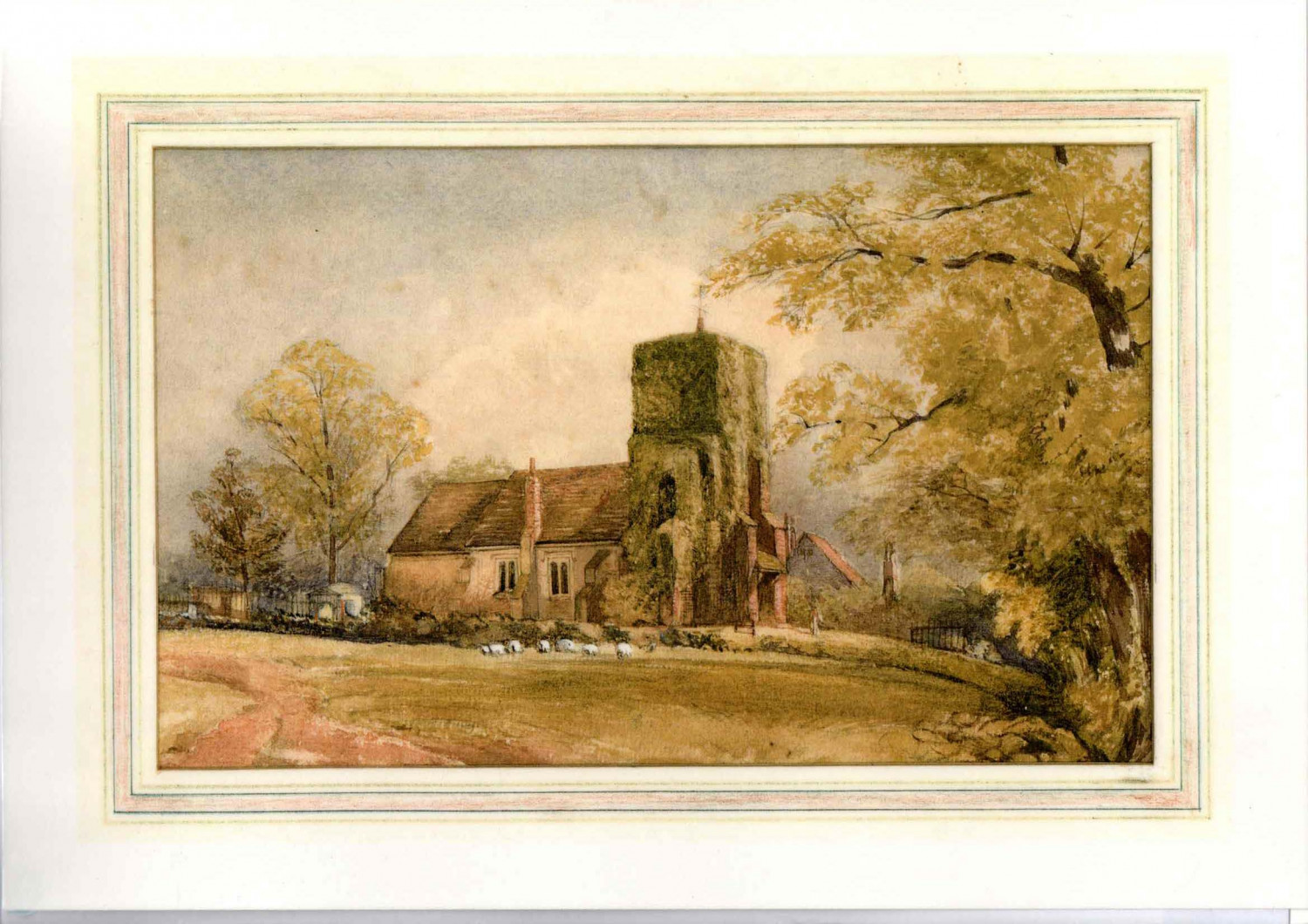
1843-44: The South porch was demolished and a new entrance formed through the tower.
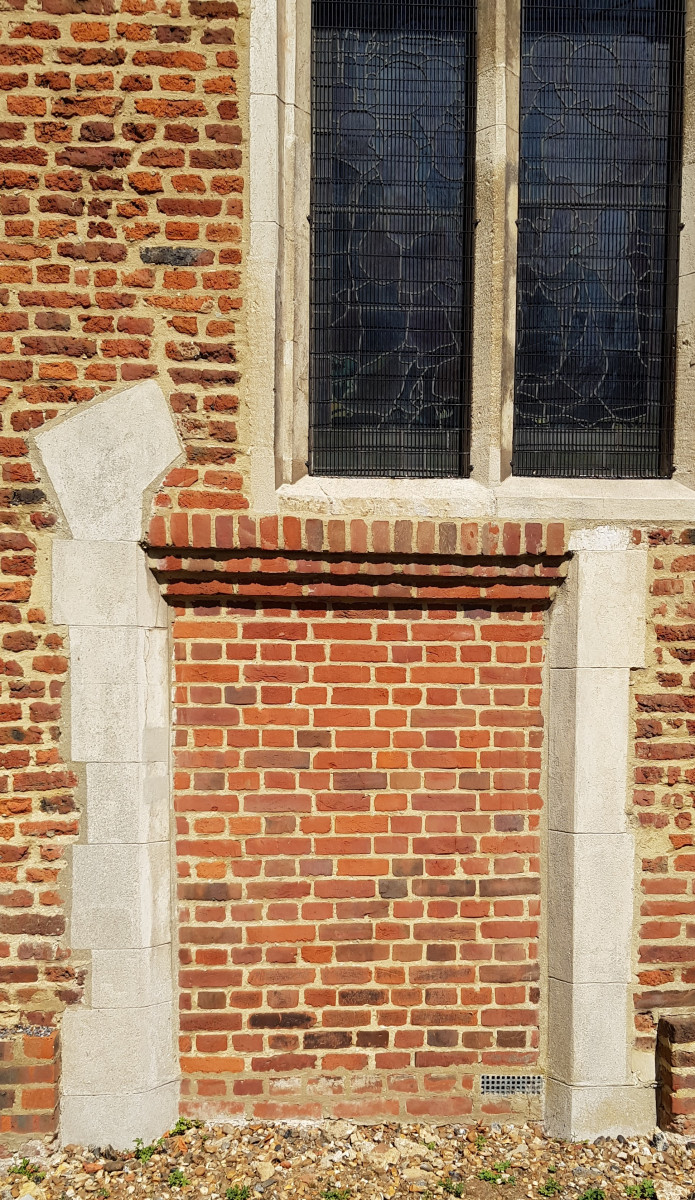
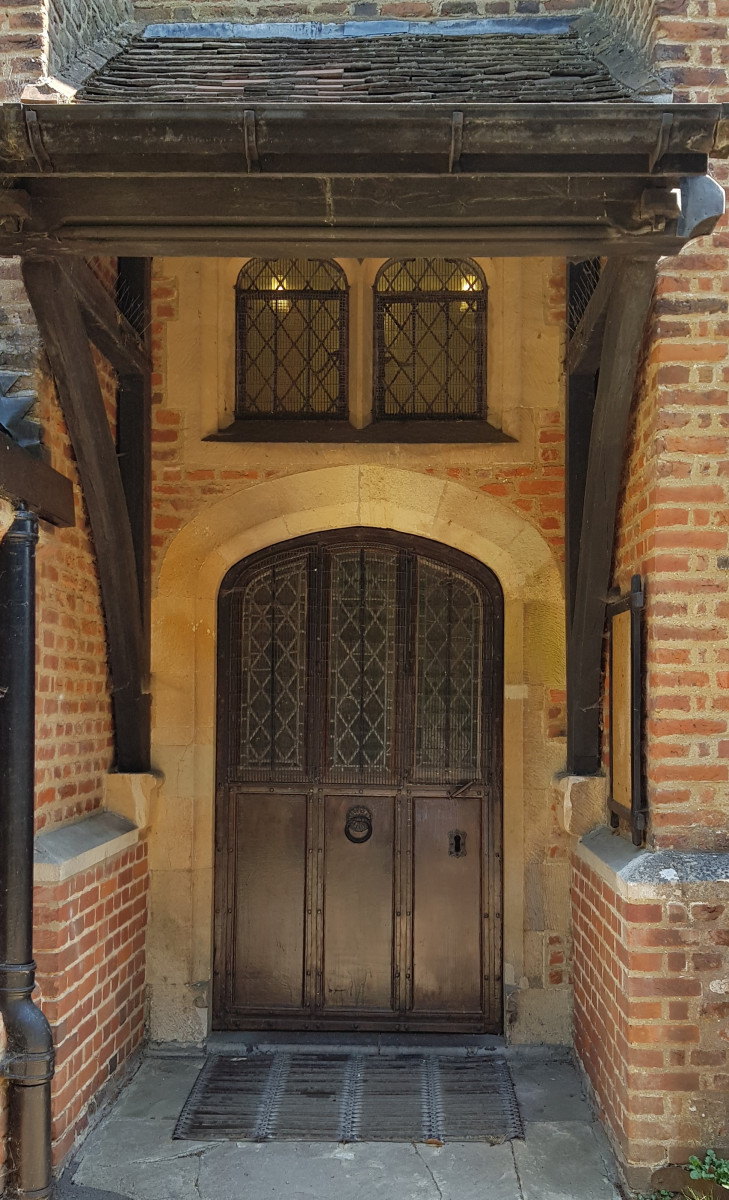
1847: Thomas Weeding, an influential property owner in the village, living at 'Fullbrooks', fitted out the nave with box pews at his own expense.
1850: The Rev. Canon William Chetwynd Stapylton arrived as Vicar and stayed for 44 years. He was long remembered as a generous benefactor to the parish.
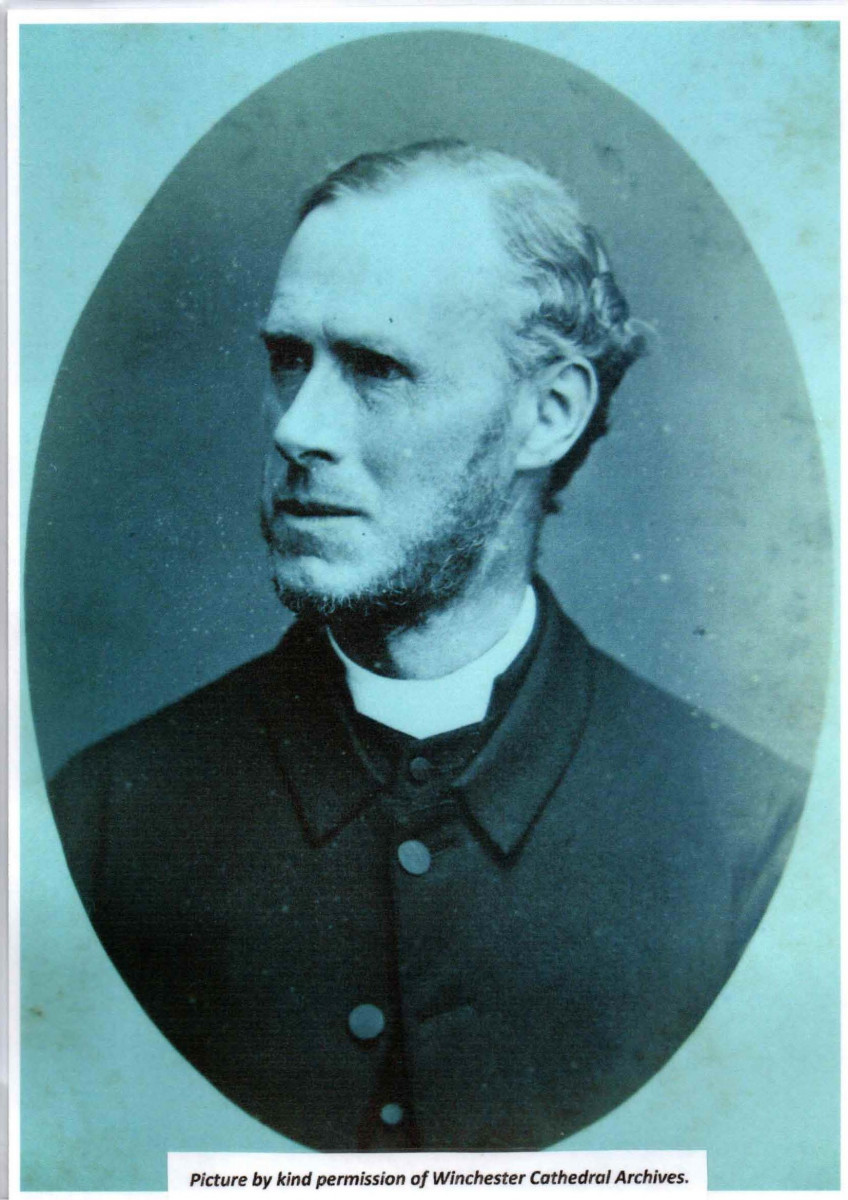
1866-67: The interior of the church was restored, the box pews being replaced by the pews that are still in the church today.
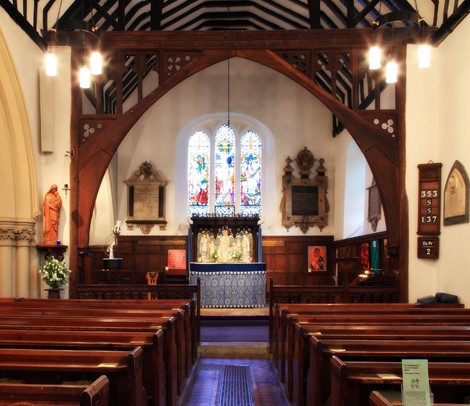
1866-67: By this time the Jacobean church had become too small for the growing village. The north wall was pulled down and replaced by an arcade springing from a central pillar and a north aisle was added.
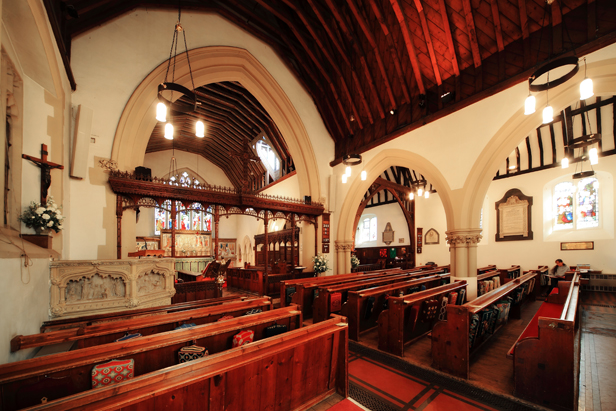
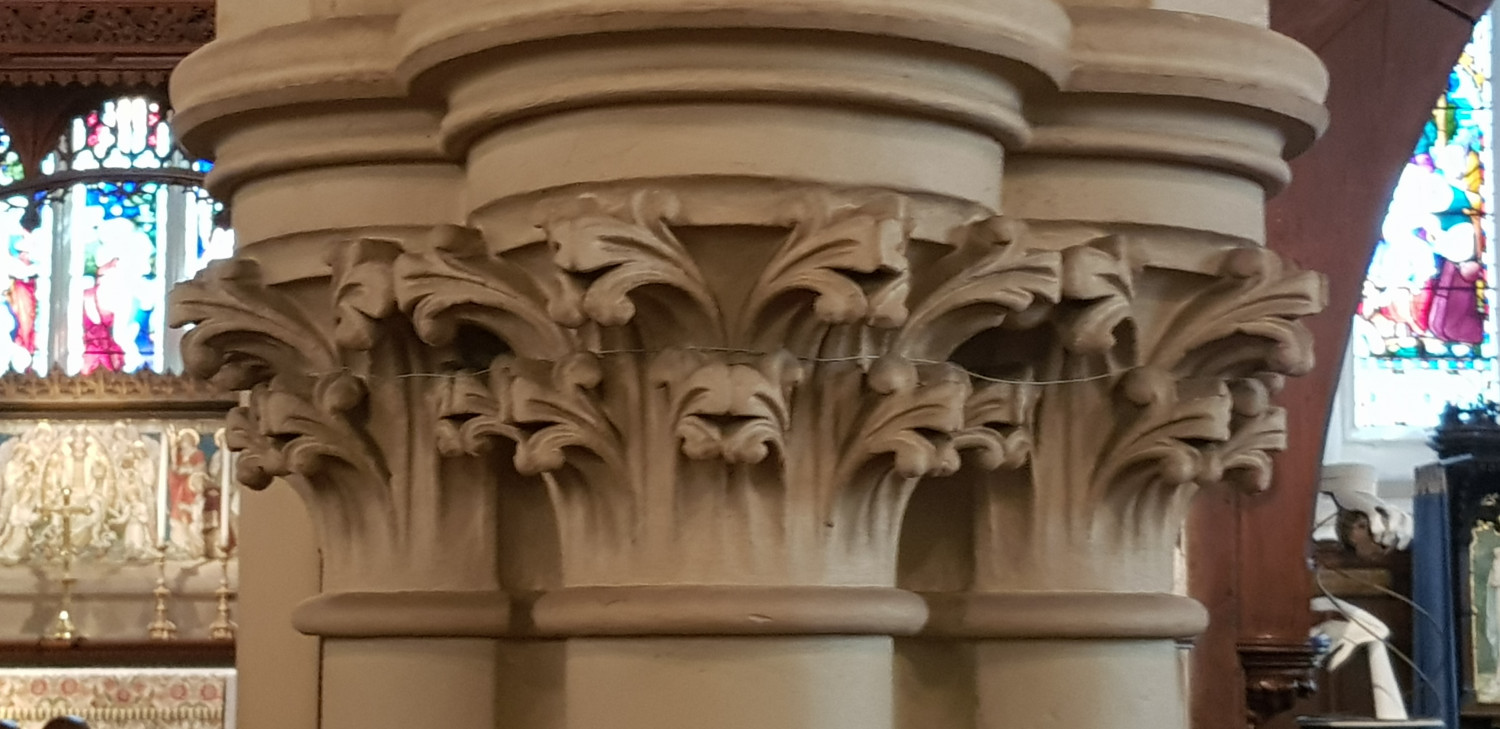
1875: As the population expanded, the new aisle was demolished and the present nave and chancel built, costing £3,026. The altar from the old church was moved to the new chancel and a stone panel let into the wall where it used to stand is inscribed: Here stood the Lord’s table on Maeldune, ‘The Hill of the Cross’, for wellnigh a thousand years until the consecration of the new chancel. Dec 7 1875.

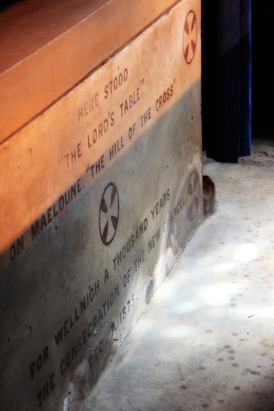
1894: An altar was again set up in the old church which since then has served as a Lady Chapel.
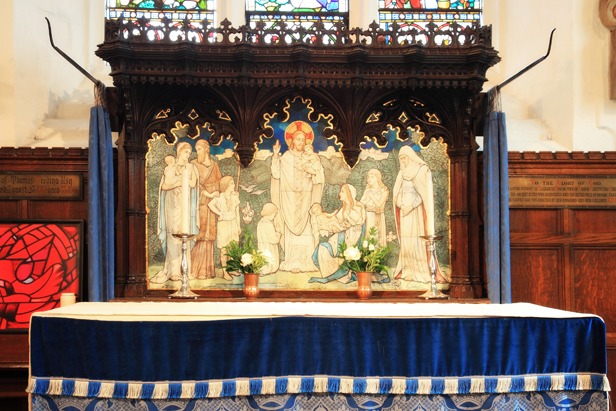
Early 1900s: the carved oak screen between nave and chancel was added, also the reredos to the high altar in memory of Canon Chetwynd Stapylton.
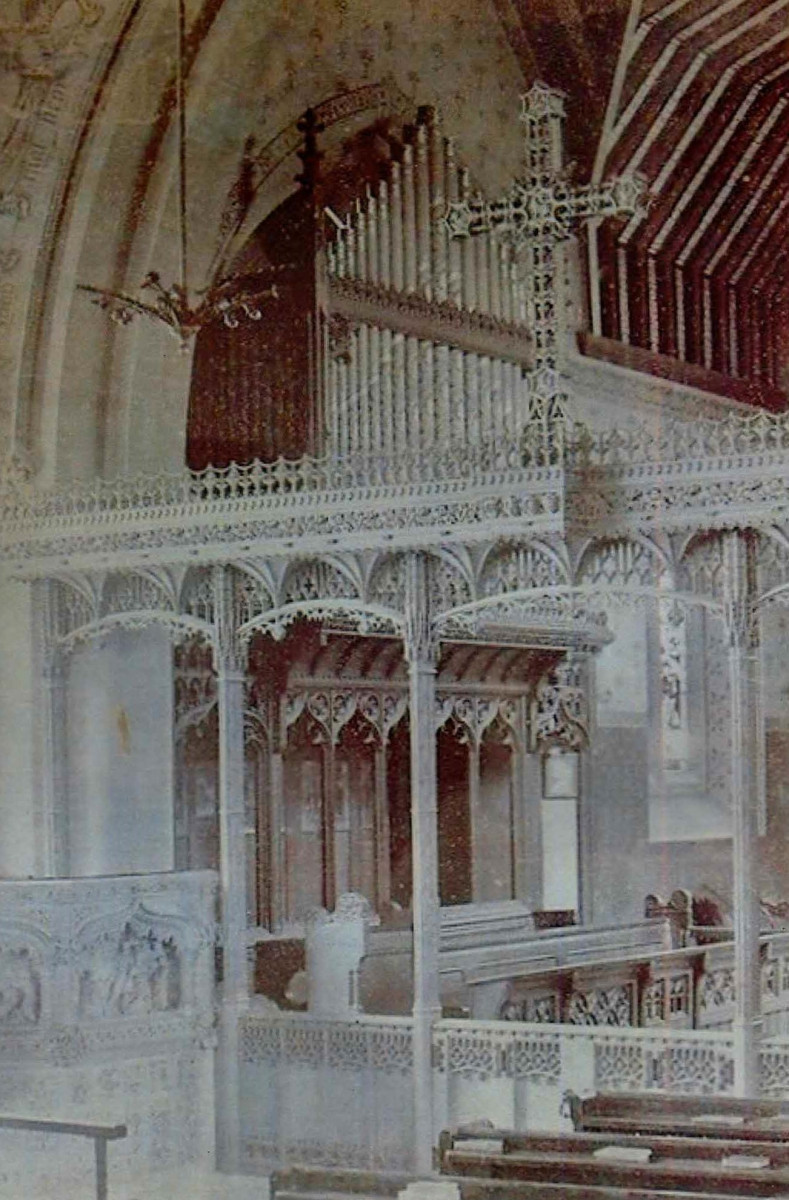
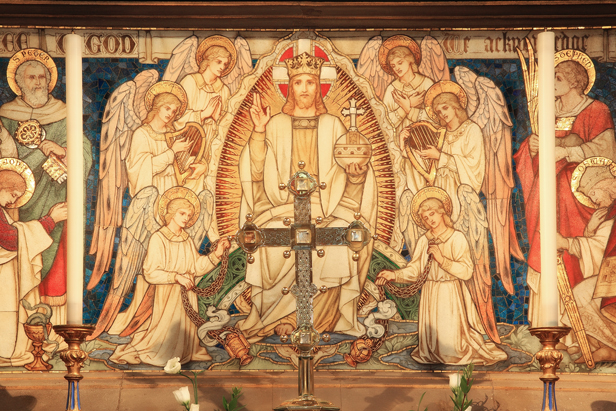
1922: Electric lighting installed.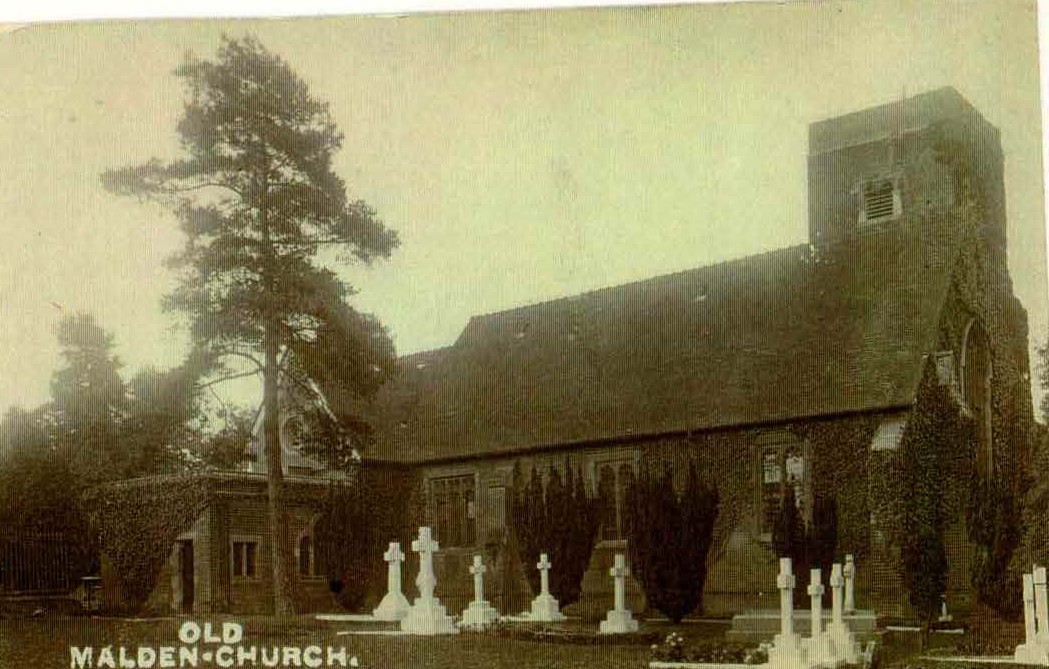
1933: Priest's Vestry added.
The priest's vestry can be seen to the left of the north side of the church.
1975: The whole church was restored to commemorate the centenary of the enlargement of 1875.
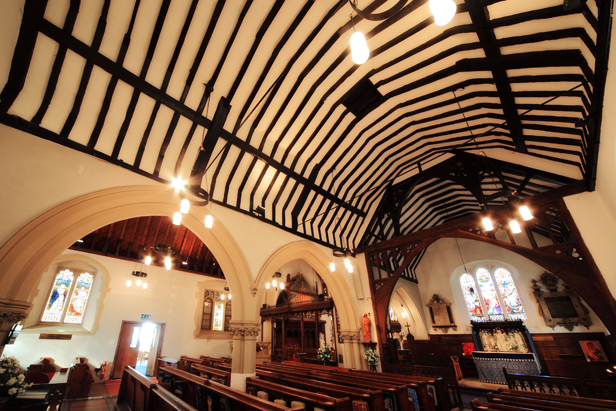
1986: 900th anniversary of the Domesday Book in which a church at Malden was first mentioned.
2004: A new two-storey contemporary extension to the north side of the church was added providing much needed vestries, meeting rooms, a kitchen and toilets.
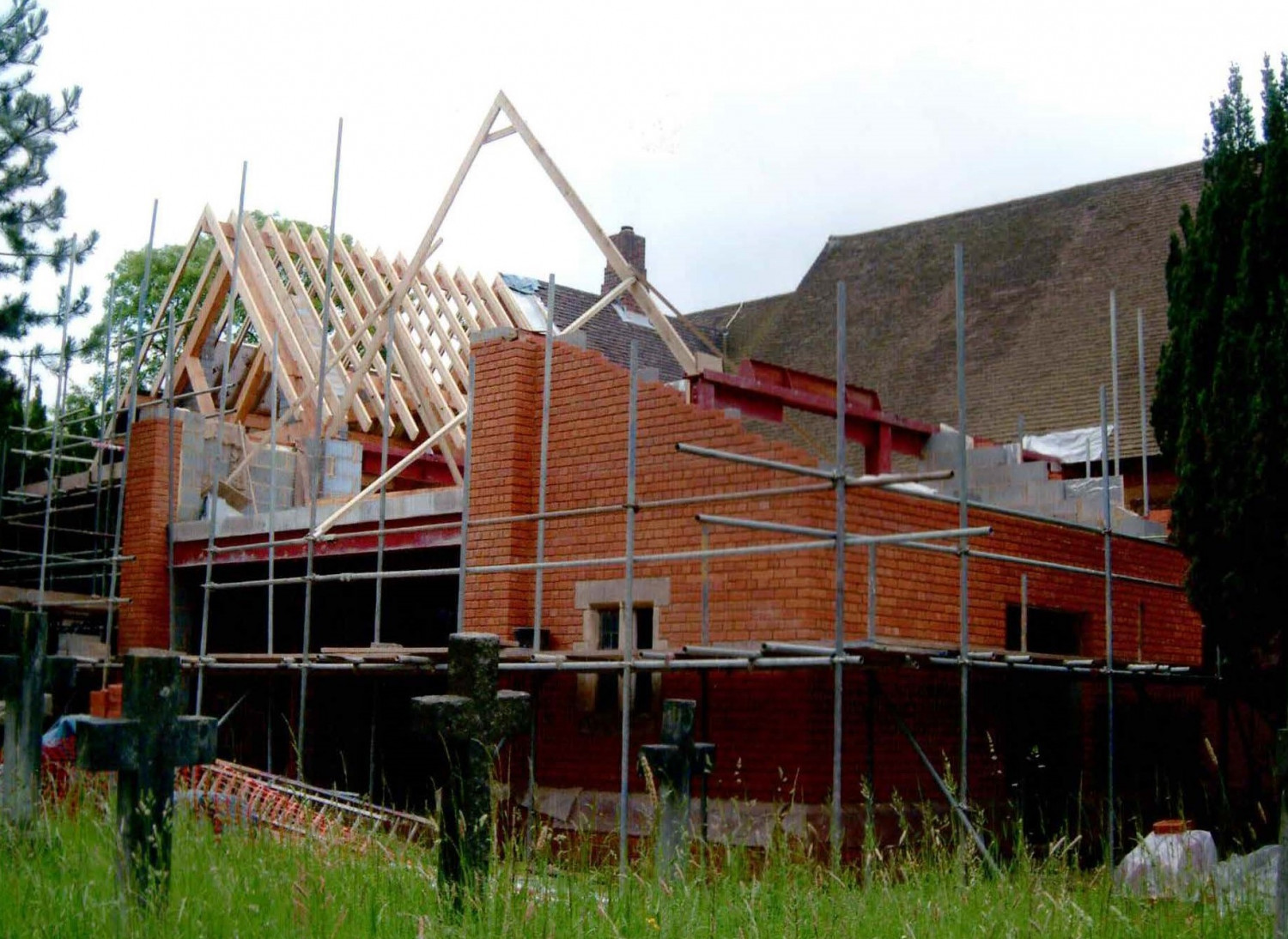
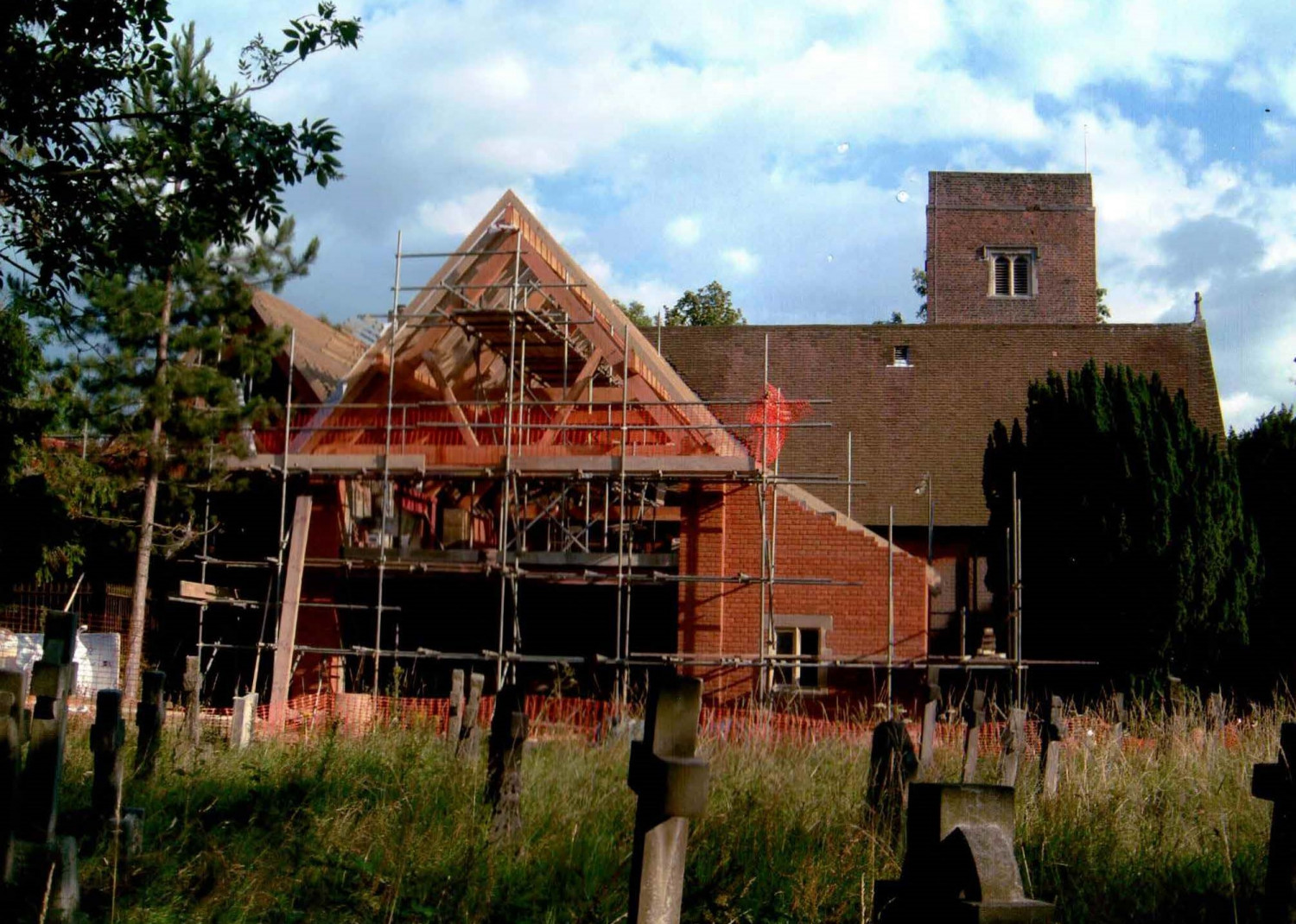
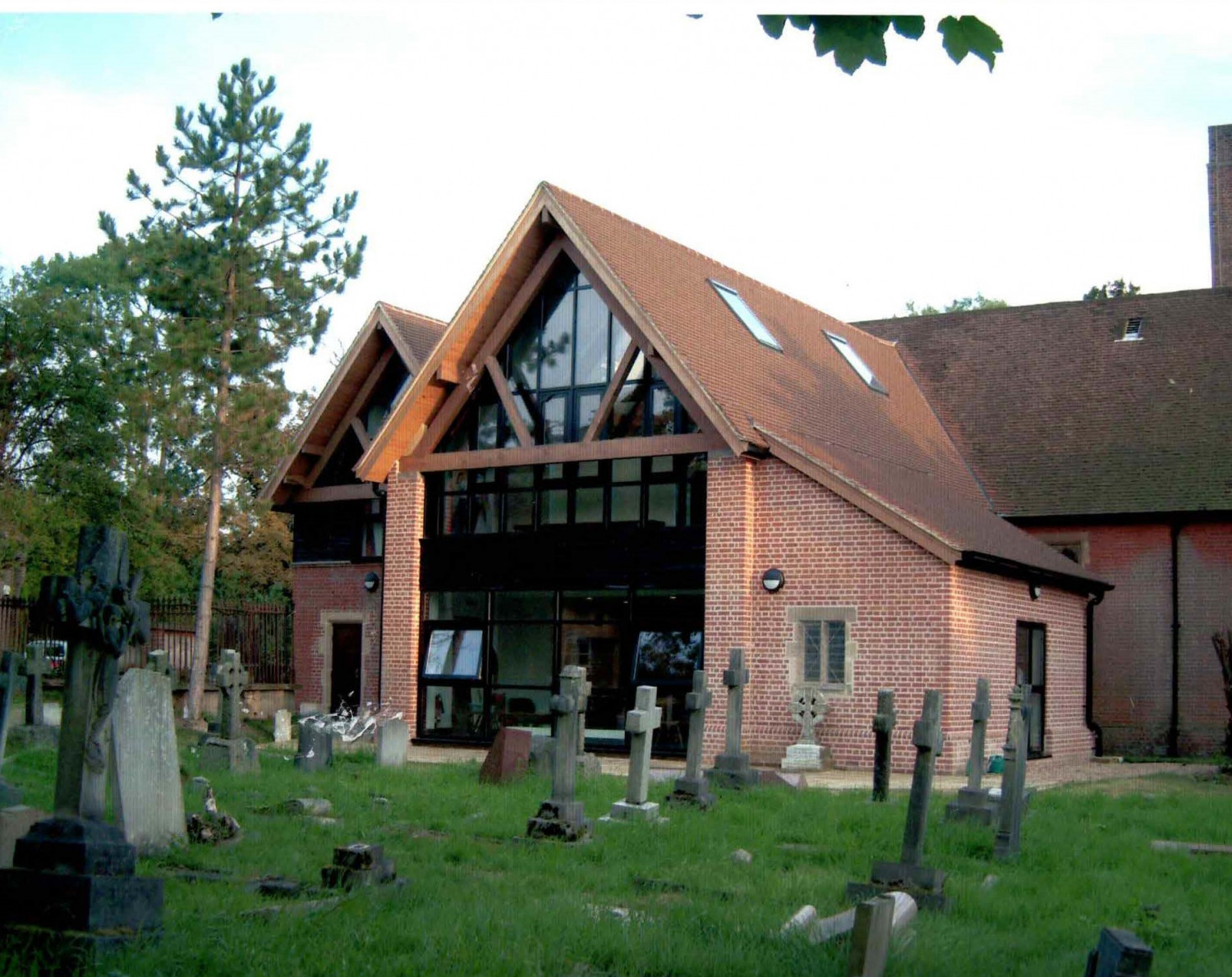
2011: Celebrations took place for the 400th anniversary of the rebuilding of the church in 1611.
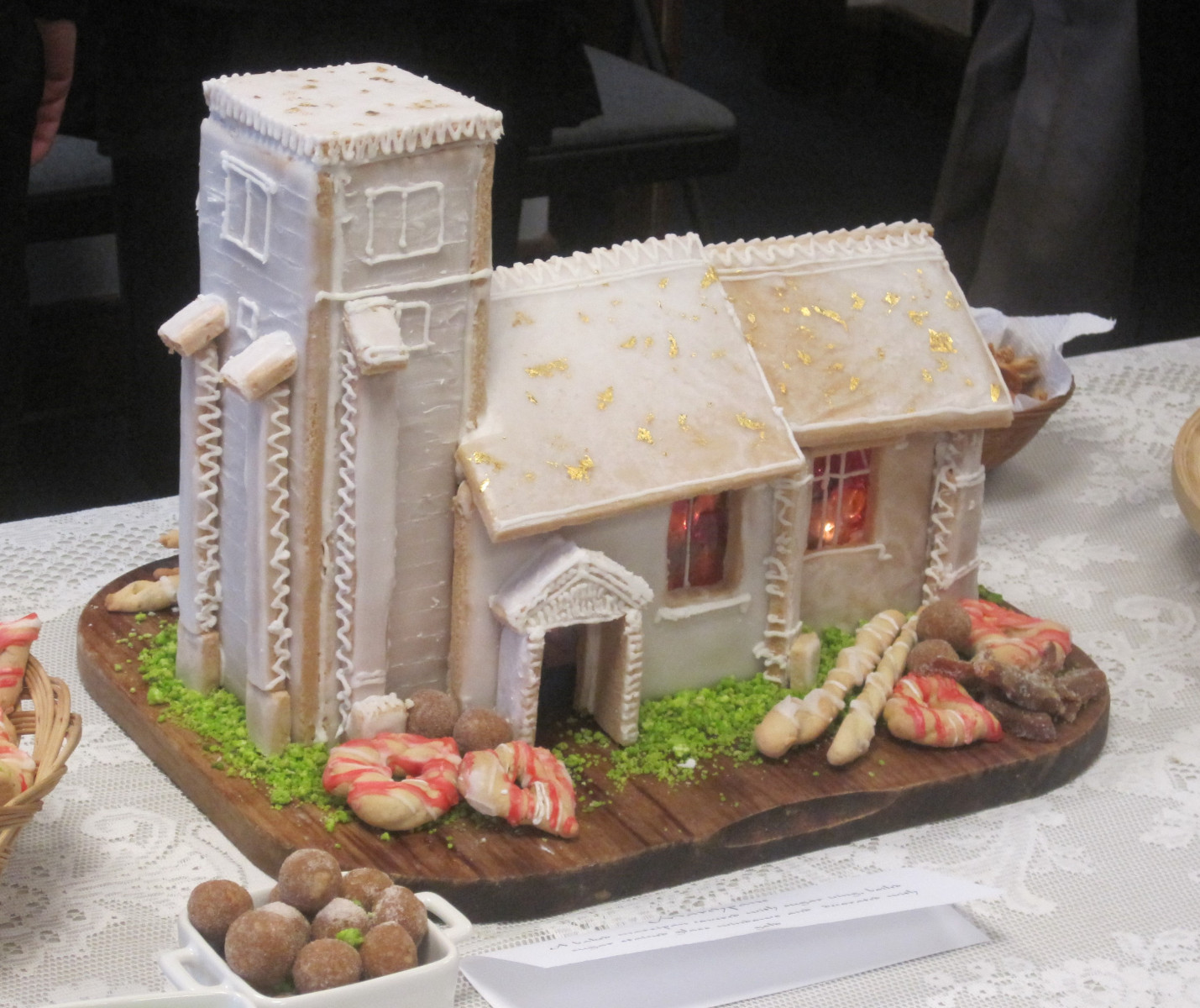
A marchpane church made as part of the 400th anniversary celebrations.
